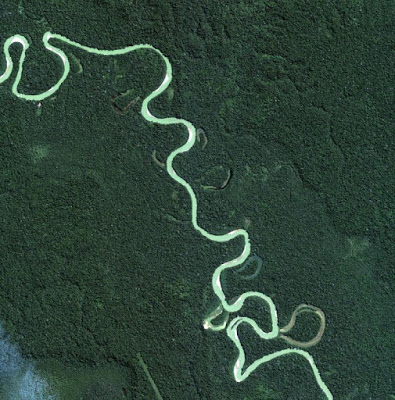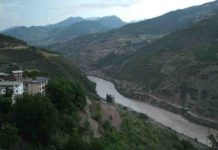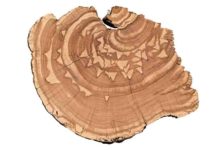
New research led by Florida Institute of Technology shows that the impacts of indigenous people prior to European contact impacted riverside forests, but that such impacts were largely limited to an area within a day’s walk from a river.
The findings by the international team of archaeobotanists, paleoecologists and ecologists will be published online in the paper “Anthropogenic influence on Amazonian forests in prehistory: An ecological perspective” on Oct. 28 in the Journal of Biogeography.
The new research, conducted using plant fossils, estimates of mammal density, remote sensing and human population modeling, reinforces that Amazonian forests may be very vulnerable to disturbance by logging , mining and other large enterprises. The study refutes an emerging theory from some archaeologists and anthropologists that Amazonian rain forests are the result of ancient managed landscapes – a notion that undermines the ecological view of these forests as fragile ecosystems.
“Nobody doubts the importance of human actions along the major waterways,” said Mark Bush, professor of biological sciences at the Florida Institute of Technology and the lead author of the paper. “But whether humans had a greater impact on the ecosystem than any other large mammal has yet to be established in much of western Amazonia.”
Dolores Piperno, curator of archaeobotany and South American archaeology at the American Museum of Natural History and co-author of the study, said the recent emphasis on Amazonia as a manufactured and domesticated landscape overstates the facts.
“At nearly the size of the continental United States, Amazonia is a vast landscape with considerable biotic and abiotic heterogeneity. Extrapolations being made from relatively few archaeological sites mainly located along water courses as to the overall effect of prehistoric human occupation must be tempered in the face of available and yet-to-be-accumulated empirical data.”
“This is not a debate solely about what happened over 500 years ago,” Bush added. “The implications are very relevant to modern society and conservation.”
He said if the forests were heavily modified prior to European arrival and have regrown in just over one tree generation to such a vast level of biodiversity, this rapid recovery could be used as a justification to log forests aggressively. If, however, humans had a very limited influence, as their findings have shown, then logging and other major disturbances would have long-lasting, possibly irreversible, consequences on the forest.
“This distinction becomes increasingly important as policy makers decide whether to enforce or relax protections of areas already designated as parks, including the Yasuni of Ecuador and protected areas in Brazil,” said Bush, who has spent almost 30 years conducting research in the Amazon.
The study is also relevant in shaping our understanding of the extent to which the Amazon Basin might offset carbon dioxide produced in industrialized areas. The young forest implied by the man-made-disturbance scenario leads to a large potential for further uptake of carbon, helping to offset carbon emissions from other regions. Bush and colleagues, however, project that very little of Amazonia will behave this way, suggesting that the massive amount of carbon held in Amazonian forest is most likely already close to a maximum capacity.
The researchers conclude that pre-European land-use by native peoples in Amazonia was highly variable, with dense settlements and profound forest disturbance over a relatively small proportion of the basin, leaving large areas little affected by human activity.
Reference:
Mark B. Bush1, Crystal H. McMichael, Dolores R. Piperno, Miles R. Silman, Jos Barlow, Carlos A. Peres, Mitchell Power and Michael W. Palace. Anthropogenic influence on Amazonian forests in pre-history: An ecological perspective. DOI: 10.1111/jbi.12638
Note: The above post is reprinted from materials provided by Florida Institute of Technology.










